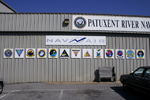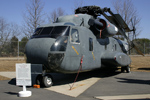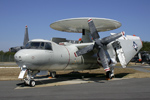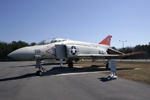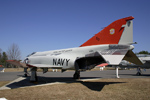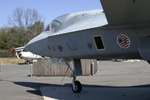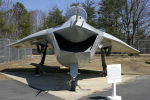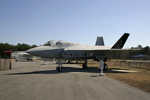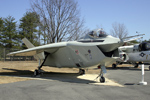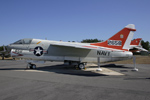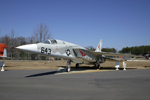In
1911 the United States Navy’s first aircraft, a Curtiss A-1 Triad
hydroplane, piloted by Lt. Taylor USN and Lt. Ellison USN departed from
Annapolis, Maryland to conduct a series of early sea trials. As the
pilots flew the plane south along the western shoreline of Chesapeake
Bay, the aircraft developed technical problems resulting in the plane
being landed near the Cedar Point lighthouse. After the pilots successfully
got the aircraft on the beach they effected repairs to the carburettor
and then continued their journey south to Smith Point, Virginia. Such
was the significance of the landing at Cedar Point that, in 1943, Cedar
Point became known as Patuxent River Air Station, and was to be the
home for all US naval aircraft evaluation and testing. The first pilots
began training at the school in 1945 and thirteen years later, in 1958,
the school was officially named the United States Naval Test Pilot School. |
|
|
To
commemorate and remember the achievements, history and technological
breakthroughs made by the pilots and personnel at the school in Research,
Development, Test and Evaluation (RDT&E), it was proposed that a
museum be built. In late 1974 the decision to go ahead with the museum
plans was given and in July 1978 the museum opened its doors to the
public. In the same year it was also recognised by the Secretary of
the Navy as one of the ten official Navy museums. |
In 1997, Naval Air Systems Command (NAVAIR) re-located their headquarters to NAS Patuxent River which effectively made the base the centre for all of the Navy’s aviation development, testing, research and evaluation. The museum also underwent changes to incorporate and encompass the role and achievements of NAVAIR and was re-named as the Patuxent River Naval Air Museum (PRNAM). |
|
|
As
the Patuxent River base complex continued to grow in size it was evident
that space limitations meant the museum had to find a new location and
with the help of the Navy the current site located in a northeast corner
near Gate 1 was procured in 2000 enabling the outside exhibits to be
placed in an air park. The exhibits inside the museum are currently
housed in temporary buildings (two converted warehouses) which provide
10,000 sq.ft of space, sufficient for the museums purposes. Inside the
buildings are a variety of exhibits which include original wind tunnel
models, various examples of aero engines and propulsion systems, a look
at the development of the flying helmet, various cockpit flight trainers
which the public can sit in, and a selection of UAV’s –
unmanned air vehicles . A recent addition are the flight simulators
where for a small charge you can have the opportunity to “fly”
an aircraft of your choice for the available list and go through flight
basics up to and including air-to-air combat. Outside the museum, the
air park currently has a total of twenty different aircraft on display
which have either tested at Patuxent River or are representative of
those types that have, and include examples from the 1950’s right
up to present day with examples of the Boeing X-32B JSF STOVL Demonstrator
and Lockheed Martin X-35C JSF Carrier Demonstrator. |
As
for the future of the museum itself, there are plans to build a new
modern design building and the project is budgeted at a cost of £3
million. So far over half of the funds needed have been raised through
various donations and sponsors so the future is looking good.
If you’re ever in the state of Maryland and have the opportunity to visit this interesting museum then do so, you will not be disappointed.
|
|
|
For
further information please visit the museums website at http://www.paxmuseum.com/index.htm |


